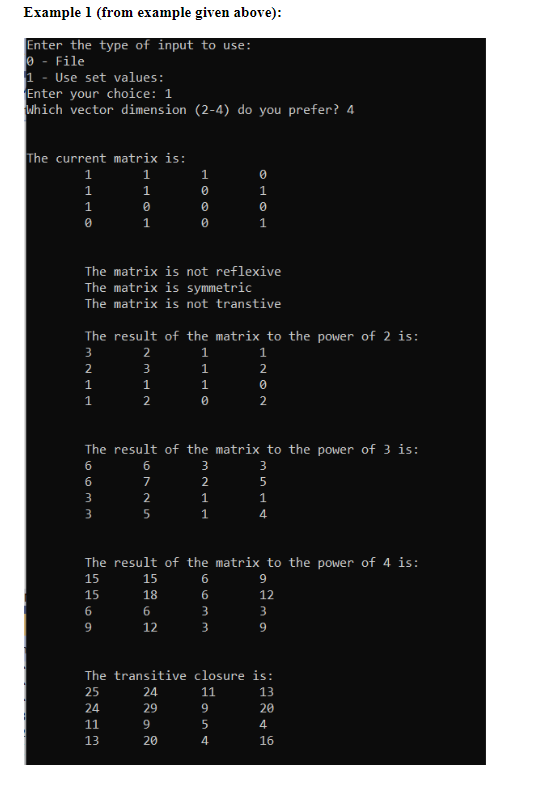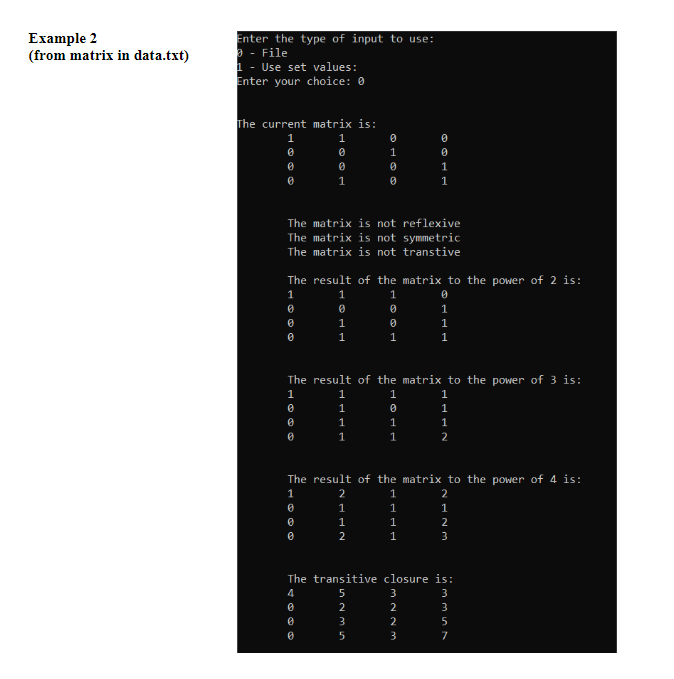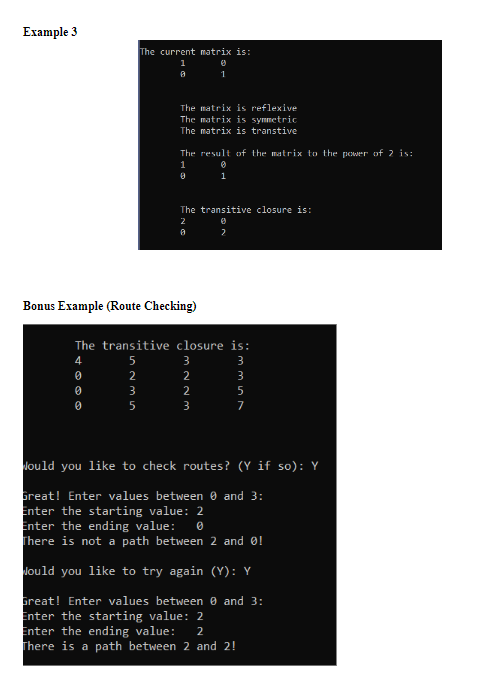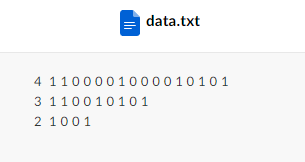Write this in C++ 






a. Create a function to initialize the matrix (sample matrix data is listed below) d=4;m1={{1,1,1,0},{1,1,0,1},{1,0,0,0},{0,1,0,1}};d=3;m1={{1,1,0},{0,1,0};{1,0,1}};d=2;m1={{1,0},{0,1}}; b. Allow the user to pick which of the 3 dimensions they prefer and use that matrix to see if it is reflexive, symmetric, transitive, and to find the transitive closure. To do this, create the functions: Create a function to print the matrix given Create a function to add two matrices together (you will be using the same matrix 2 times) Create a function to square the matrix given Create a function to check if the matrix is reflexive (if all values on the diagonal are 1) Create a function to check if the matrix is symmetric (values are equal across the diagonal) Create a function to check if the matrix is transitive (not transitive if there is a non-zero in the squared matrix that is zero in the original matrix) Create a function to find the transitive closure of the matrix (continue to multiply the matrix by itself up to the number of dimensions and keep a running total of the sum of all of these matrices) a. Create a function read an input file (see data.txt for input example). Add the code to read the matrix size \& load the elements of a matrix (in row-major order) from a file, reading \& processing multiple matrices and outputting the results b. Prompt to see if user would like to verify a path. If so, allow user to enter a starting value and ending value to determine if a path exists from the starting point to the ending point (if the coordinate point in the transitive closer is non-zero, there is a path from i to j(i,j). a. Be sure to comment code b. You must use functions (.h and .cpp files) for the functions listed above the type of input to use: ile se set values: your choice: 1 vector dimension (2-4) do you prefer? 4 urrent matrix is: The matrix is not reflexive The matrix is symetric The matrix is not transtive The result of the matrix to the power of 2 is: The result of the matrix to the power of 3 is: 6633672532113514 The result of the matrix to the power of 4 is: 1515691518612663391239 Example 2 (from matrix in data.txt) The matrix is not reflexive The matrix is not symmetric The matrix is not transtive The result of the matrix to the power of 2 is: 1000101110010111 The result of the matrix to the power of 3 is: 1000111110111112 The result of the matrix to the power of 4 is: Bonus Example (Route Checking) lould you like to check routes? (Y if so): Y oreatl Enter values between 0 and 3: Enter the starting value: 2 Enter the ending value: 0 There is not a path between 2 and 0 ! lould you like to try again (Y): Y Great! Enter values between and 3: Enter the starting value: 2 Enter the ending value: 2 There is a path between 2 and 2 ! data.txt 41100001000010101311001010121001













